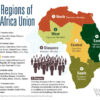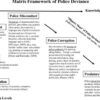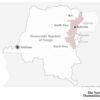Follow
Understanding what makes your colleagues ‘tick’ is the first step towards change – Written by Pia Andrews for Apolitical
One of the main pressures on public sectors is budget and resource constraints. Everyone increasingly has less to do more. In some cases, some of those pressures are conflated by fatigued systems and staff that haven’t had investment for decades, with a mountain of technical and cultural debt that grows every day.
Collaboration can help ensure better outcomes through working together, cross-sector, cross-jurisdiction, with communities and with strategic partners around common goals. When we talk to and work with others doing similar work, we can all build upon the efforts of each for better outcomes.
Arguably, it’s not the job of a citizen to understand the complexities of government, but rather the job of the government is to do the hard work to abstract the complexities of governance for better engagement and services for citizens. That’s our job, which means if you’re not collaborating and working across governments in whatever you are doing, then you’re not likely getting the best possible outcomes for citizens in the most efficient way.
But there are many challenges to collaboration. One of the biggest challenges is the isolating nature of operational silos created by vertical accountabilities and competition for the budget. This creates territorial, adversarial protectionist behaviours, like unwillingness to share even the most basic artifacts, content or tools. Many people, particularly managers, feel pressure to deliver to the specific goals of their chain of command within a tightly constrained budget which makes it much harder to take the risk of co-investment or co-resourcing an outcome. Many believe they can’t justify engaging or operational collaboration with others because success and risk are largely measured in project delivery terms rather than impact or outcomes.
Some strategies to consider when trying to improve collaboration in the public sector including team culture development, tapping into natural motivation, using or developing horizontal work programs (like life journey mapping), and reframing how we see leadership.
Establishing an empowered and safe team culture
It feels impossible and risky to collaborate or work openly when you are under enormous pressure, and unfortunately, a lot of public servants live this reality every day. If you want to improve collaboration to yield the many benefits, it is critical to establish a strong team culture that supports and recognises experimentation, collaboration, and openness.
Collaboratively developing a culture statement with your team, branch, division or even department draws out the behaviours people want to see in their work environment and creates a foundation for mutual respect, trust, and engagement across your team and with your colleagues. You should be able to establish a mutually agreed team culture within 3 months or so which then starts to yield immediate benefits for the teams and work program. By about 6-9 months you should see behaviours changing and individuals starting to naturally collaborate, share and reach out more. If your culture explicitly supports experimentation with permission to try (and fail), then people can try things before major commitment, which also enables greater collaboration around small test cases for mutual benefit.
The amount of “urgent” requests in any department is sometimes breathtaking, and people often drown in the barrage of email and work longer and longer hours, becoming less and less productive
It is also critical to ensure a carefully balanced program of work that gives the team some breathing space, which also means protecting your teams from unnecessary busywork. The amount of “urgent” requests in any department is sometimes breathtaking, and people often drown in the barrage of email and work longer and longer hours, becoming less and less productive. It is important for individuals, and particularly senior executives, to constantly ensure they are doing their part to protect their teams so that the majority of time is being spent on doing the actual job, and not getting entirely sucked into busywork that doesn’t further the agenda. This means trying to streamline, automate and sometimes deprioritising busy work to protect important work. It also means senior management needs to delegate more decision making to empower teams to get better outcomes, not just delegate effort, and certainly not to delegate busy work.
Once you have a team that feels empowered, supported and less pressured, magic can start to happen!
One of the things about being a child of the internet (albeit in the very early days), is that I consider my workspace not limited to the desk that I have. I don’t start any new project with “what tools do I have, who’s in my immediate team, who’s in my area/department, how does my budget limit me”? I tend to start with what’s happening in the world, not just to integrate good practice into what we do, but to see the whole world as my workspace, my playground, my community of practice. In this way, you can both leverage what and who is already out there rather than starting from scratch each time, and you also automatically get into a collaborative mindset. When you value what is already out there, you tend to want to reach out.
Another cultural way to support collaboration is to openly share. When you share what you are doing, you naturally attract potential allies who share your goals, and with whom you can forge a strategic and mutually beneficial partnership, where all parties are naturally motivated to collaborate.
Tapping into natural motivation
The concept of finding the ‘natural motivation’ of players involved is a key component for any type of systemic change to be successful. This isn’t a particularly unique or new idea, but I am constantly surprised by how rarely I see it adopted in practice, and how often things fail by not taking it into consideration. It is critical if you want to take a new idea from the domain of evangelists and into “business as usual” because if you can’t embed something into the normal way people act and think, then whatever you are trying to do will be done reluctantly and at best, tacked on to normal processes as an afterthought.
If I talked to you about how a new way of doing something would save you time, get a better outcome, save money or made life better in any way, you would be more interested
In recent years I’ve been doing a lot of work to try to change systems, thinking and culture around open government, and open data, with some sustained success. This is in part because I purposefully take an approach that tries to identify and tap into the natural motivation of all players involved. This means understanding how what I’m trying to do could benefit the very people who need to change and helping them want to do something new of their own volition. Why does this matter? If I asked you to spend an extra couple of hours a week at work, for no extra pay, doing something you don’t understand that seems completely unrelated to your job or life, you’d tell me to sod off. And understandably so! And yet we expect people and behaviours to simply comply if we change the rules. If I talked to you about how a new way of doing something would save you time, get a better outcome, save money or made life better in any way, you would be more interested. Then it simply becomes a matter of whether the effort is worth the benefit.
Some folk argue that you can drive change by simply punishing non-compliance or creating incentives, but I would argue that though you can force certain behaviour changes through punishment or reward if people aren’t naturally motivated to make the behaviour change themselves then the change will be both unsustainable and minimally implemented.
When I took over data.gov.au, there was a reasonable number of datasets published but they weren’t being updated and nothing new was being added. It was a good first attempt, but open data had not really been normalised in agencies, so data publishing was sporadic.
If you want to make real change, I encourage you to take an empathetic approach, think about all the players in the system, and how to ensure they are naturally motivated to change
We quickly realised if open data was just seen as a policy and compliance issue, then this would never really change and we would hit a scaling issue of how much we could do ourselves. Through research, experimenting and experience, we found that open data could provide actual business benefits to agencies which became a natural motivation for some agencies to establish their own open data programs. We would start an agency on the open data journey by helping identify datasets that save them time and money, looking at resource-intensive requests for data they regularly get and how to automate the publishing of that data, or where they needed data APIs for service delivery. This then frees up resources of which a proportion could often be justified to start a small open data team. We also helped agencies get value from public reuse of data (GovHack was particularly helpful for this). Once an agency team saw genuine benefits, they would want to resource and overcome barriers for themselves. In 2 years we went from zero to 20 agencies engaged in open data publishing.
Motivation doesn’t need to always come from within the individual person or organisation. Sometimes motivation comes from a little healthy competition! I have had people in agencies utterly uninterested in open data who become interested when they saw other agencies getting benefits and success stories. Don’t underestimate the power of public successes! Be as loud as you can about successes you find or have as this builds demand and helps bring more people on your journey.
If you want to make real change, I encourage you to take an empathetic approach, think about all the players in the system, and how to ensure they are naturally motivated to change. If the path of “good” is also the path of least resistance, then people will naturally walk it and collaboration will be naturally enabled.
Life journey programs
Life journey mapping is a novel but powerful way to create naturally motivated collaboration across departments. New Zealand has led the way with life journey based service integration, and it is distinct from “customer journey mapping” in that it intentionally maps the full experience of people through a significant life journey, looking at all the user needs and services across all sectors. Often people start with family and friends when having to go through a significant life event, such as end of life, becoming an adult or starting a family. Life journey programs provide opportunities for reducing (through integration) the steps of major life journeys, improve outcomes and dignity for citizens, and to create greater integration and improvements for agencies and society as a whole.
How does it enable collaboration? By providing one of the very few horizontal levers in government that can help overcome the vertically aligned portfolio siloes. Usually, a service delivery team would do the customer journey mapping of their particular transaction, or perhaps the user experience of their department, but even if they want to improve the whole user experience they have low support to go outside the portfolio mandate to improve the experience with other departments or jurisdictions. And yet, for major life journeys, it is inevitable that citizens have to deal with multiple departments and jurisdictions.
Life journey programs naturally motivate agencies to collaborate sideways as everyone benefits from improving the entire user experience
When you establish a life journey program, agencies can participate in the process of understanding the holistic journey of people, and can see ways to improve the journey up or down stream from their part of the journey. Life journey programs naturally motivate agencies to collaborate sideways as everyone benefits from improving the entire user experience rather than just tweaking individual steps along the way. Many citizens rate their government experience only as good as their last or worst exchange, so raising the quality of the entire experience is critical. Often the integration or service reform opportunities can also create some business benefits for agencies themselves, which then creates further natural motivation to collaborate on life journeys.
I have seen this working well in New Zealand, and when I started in the NSW Government I established a life journey program from scratch and was amazed at how quickly it brought agencies to work together, though this does require senior buy-in and putting key life journey agencies in the driving seat of the agenda so they bring their gravitas and networks to the table. It’s also important to note that if you don’t ensure rapid delivery and value realisation, then enthusiasm and investment from agencies quickly wanes.
Designing horizontal programs and pressures that cross-portfolio lines is an important and helpful counterbalance to the vertical pressures of our Westminster system to enable collaboration.
Leadership
Leadership programs in public sectors often teach top-down leadership methods and models to senior executives. This reinforces the flawed notion that seniority correlates somehow to superiority, which in turn drives senior executive behaviours that disempower and dismiss the experience, expertise and value of people the further down the hierarchy they are.
The alternative is to consider “servant leadership” as the new norm in the public sector. Servant leadership is about serving, protecting and supporting the people who work for you to bring their best and whole selves to work. It is about acknowledging that excellence comes from everyone, not just from the top. Servant leadership brings everyone on the journey, and turns change into something that can be collaborative and opportunistic, rather than dreaded. Change is certainly the new normal, so building resilience in our people and teams is critical to maintaining momentum.
Finally, I often hear people say, “Oh, we can’t possibly do that. We need good leadership first”. Allow me to turn this around. We are all leaders in this sector. We are the future of the public service and nothing will change by waiting for someone else to change it. We need people leadership, technical leadership, policy leadership, subject matter leadership, vision, kindness, collaboration. There’s leadership needed in every discipline at every level and identifying what you can do better in your job today is more important than waiting for someone else to lead you. I urge all public servants to lead through doing and be the change you want to see. Actively collaborate with your peers and partnerships across the sector, the community, and the world, and you will see far greater impact and outcomes from your work and efforts — Pia Andrews
https://apolitical.co/en/solution_article/how-to-motivate-real-change-across-the-public-sector















